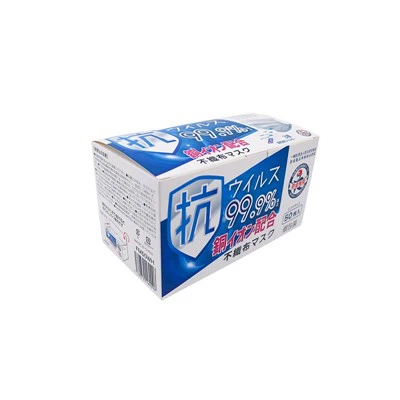As a supplier of Flat Glue Corrugated Boxes, I often encounter questions from customers about the suitability of our products for various applications. One common query is whether flat glue corrugated boxes can be used for cold storage. In this blog post, I'll delve into this topic, exploring the factors that determine the usability of these boxes in cold environments, their advantages, limitations, and best practices.
Understanding Flat Glue Corrugated Boxes
Flat glue corrugated boxes are a popular choice in the packaging industry due to their versatility, strength, and cost - effectiveness. These boxes are made by gluing flat corrugated sheets together, creating a sturdy structure that can hold a variety of products. They come in different sizes, shapes, and thicknesses, making them suitable for a wide range of applications, from shipping consumer goods to storing industrial parts.
To learn more about our Flat Glue Corrugated Boxes, you can visit our product page Flat Glue Corrugated Box.
Factors Affecting the Use of Flat Glue Corrugated Boxes in Cold Storage
Several factors need to be considered when determining whether flat glue corrugated boxes can be used for cold storage.
Temperature
Cold storage environments can range from just above freezing to extremely low temperatures. Most standard flat glue corrugated boxes are designed to withstand normal room temperatures. At low temperatures, the paper fibers in the corrugated board can become more brittle. This brittleness increases the risk of the box cracking or breaking when handled, especially if it is subjected to impacts or bending. However, if the temperature is not too extreme (e.g., around 0 - 10°C), the boxes may still perform adequately, provided they are not handled roughly.
Humidity
Humidity levels in cold storage are often high, as cold air can hold less moisture. When the warm, moist air outside the cold storage unit comes into contact with the cold boxes, condensation can form on the surface of the boxes. If the boxes are exposed to excessive moisture for an extended period, the corrugated board can weaken. The glue used to assemble the boxes may also lose its adhesive strength, causing the box to fall apart.
Product Weight and Shape
The weight and shape of the product being stored in the box also play a crucial role. Heavy products put more stress on the box, and in a cold environment, the already potentially brittle box may not be able to support the weight as effectively as it would at normal temperatures. Irregularly shaped products can also cause uneven stress distribution on the box, increasing the likelihood of damage.
Advantages of Using Flat Glue Corrugated Boxes in Cold Storage
Despite the challenges, there are several advantages to using flat glue corrugated boxes in cold storage.
Cost - Effective
Flat glue corrugated boxes are generally more affordable than other types of packaging materials, such as plastic containers. For businesses looking to minimize packaging costs, these boxes can be a viable option, especially for short - term cold storage.
Customizability
These boxes can be easily customized to fit the specific needs of the product. They can be printed with product information, handling instructions, or branding, which is beneficial for inventory management and marketing purposes. You can check out our Handle Packaging Box for more customized options.
Recyclability
Corrugated boxes are highly recyclable, which is an important consideration for environmentally conscious businesses. Using flat glue corrugated boxes in cold storage can help reduce the environmental impact compared to non - recyclable packaging materials.
Limitations of Using Flat Glue Corrugated Boxes in Cold Storage
While there are advantages, it's important to be aware of the limitations.
Durability Issues
As mentioned earlier, the brittleness of the corrugated board at low temperatures and the potential for moisture damage can significantly reduce the durability of the boxes. This may lead to increased product damage during storage and transportation.
Limited Shelf Life
In a cold and humid environment, the shelf life of flat glue corrugated boxes is shorter. Over time, the box may deteriorate to the point where it can no longer protect the product effectively.
Best Practices for Using Flat Glue Corrugated Boxes in Cold Storage
If you decide to use flat glue corrugated boxes in cold storage, here are some best practices to follow.
Choose the Right Box
Select a box with a higher flute profile and a thicker board for better strength. You may also consider using boxes with moisture - resistant coatings to protect against condensation. Our Lid and Base Corrugated Box can be a good option as it often provides better protection.
Pre - Treatment
Before placing the boxes in cold storage, you can pre - treat them with moisture - resistant sprays or coatings. This can help reduce the impact of condensation and extend the life of the boxes.
Handling
Train your staff on proper handling techniques. Avoid dropping or rough handling of the boxes, especially in cold environments. Use appropriate handling equipment, such as pallet jacks or forklifts, to move the boxes safely.
Monitoring
Regularly monitor the condition of the boxes in cold storage. Check for signs of damage, such as cracks, loose seams, or excessive moisture. Replace any damaged boxes immediately to prevent product damage.


Conclusion
In conclusion, flat glue corrugated boxes can be used for cold storage under certain conditions. If the temperature and humidity are within an acceptable range, and proper handling and preventive measures are taken, these boxes can provide a cost - effective and customizable packaging solution. However, it's essential to carefully assess the specific requirements of your cold storage application and consider the limitations.
If you're interested in exploring our range of flat glue corrugated boxes for your cold storage needs, we'd love to hear from you. Contact us to start a procurement discussion and find the best packaging solution for your business.
References
- "Corrugated Packaging: Design, Manufacture, and Recycling" by John A. Keefe.
- "Packaging Technology" by Owen R. Pike.
- Industry research reports on cold storage packaging solutions.





